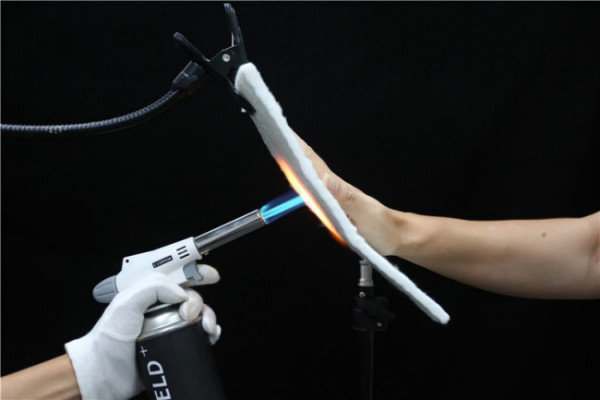
In the wonderful world of materials science, aerogel felt is like a bright new star, attracting widespread attention with its excellent performance.
Aerogel felt is a flexible thermal insulation material synthesized by a special process using silica aerogel as the main material and compounding it in reinforcing fibers such as glass fiber and pre-oxidized fiber. It has a unique nano-scale porous structure and extremely high porosity, which gives it many magical properties.
The thermal insulation effect of aerogel felt is unique, 2-5 times that of traditional thermal insulation materials. Under the same thermal insulation requirements, its thickness is only a fraction of that of traditional materials, which greatly reduces the thickness of the insulation layer, improves space utilization, and reduces heat loss, especially in high-temperature environments. At the same time, it is hydrophobic and fire-resistant, can be absolutely waterproof, and effectively prevent moisture from invading pipes and equipment; it also has A1-level fire resistance for buildings, and its unique three-dimensional network structure prevents it from sintering deformation, sedimentation, and other conditions that lead to a decrease in thermal insulation effect when used at high temperatures for a long time, like other thermal insulation materials. Moreover, aerogel felt is light in texture, easy to cut and sew, and can be easily adapted to various shapes of pipes and equipment for insulation, greatly reducing the time and manpower required for installation. Its softness and flexibility also make construction more convenient.
When producing aerogel felt, the first thing to do is to prepare suitable raw materials such as silicon source. Then, through the sol-gel method, the silicon source is hydrolyzed to generate active monomer silicic acid, which is polycondensed to form a polymer sol with silicon oxygen as the main body, and then cross-linked into a gel skeleton with a three-dimensional network structure. During this period, fiber composite, flexibility modification, hydrophobic modification and doping modification are also performed. After that, the key drying process replaces the liquid solvent in the gel with a gaseous substance to make an aerogel. Finally, the aerogel is modified by fiber reinforcement and other modifications to make up for its own shortcomings such as poor mechanical properties, thereby obtaining an aerogel felt with excellent performance. With these outstanding characteristics, aerogel felt is widely used. It can effectively insulate heat in industrial fields such as industrial pipelines, storage tanks, industrial furnaces and power plants; it can ensure safety and comfort in transportation fields such as lifeboats, warship bulkheads and motor vehicles; it plays an important role in direct-buried pipelines, injection molding machines, and detachable insulation covers; it also performs well in industries such as household appliances, steel, non-ferrous metals, and glass, becoming an indispensable high-quality insulation material in many modern fields.
